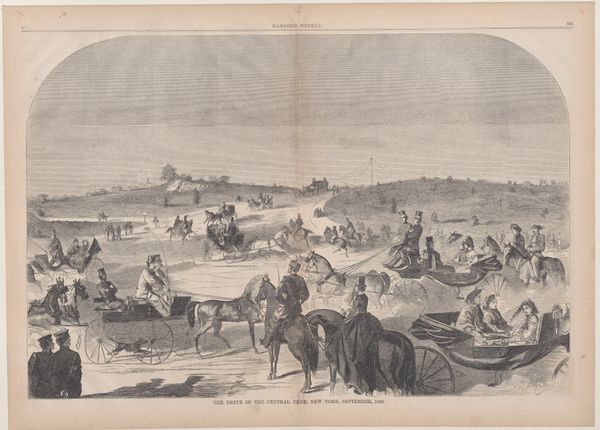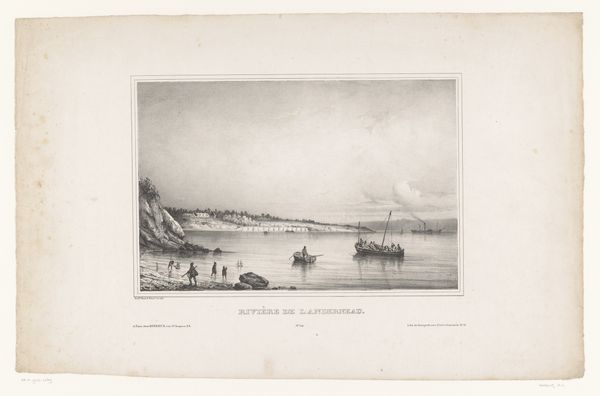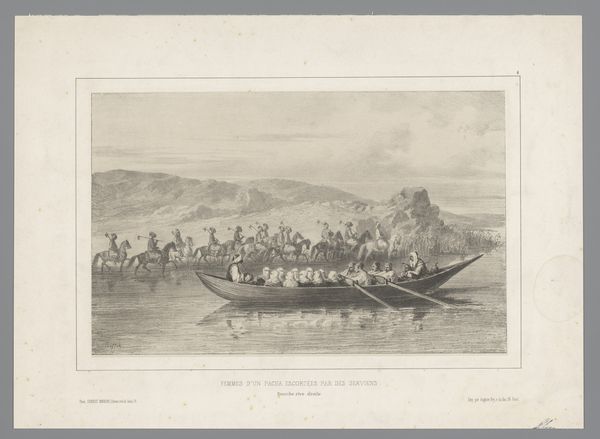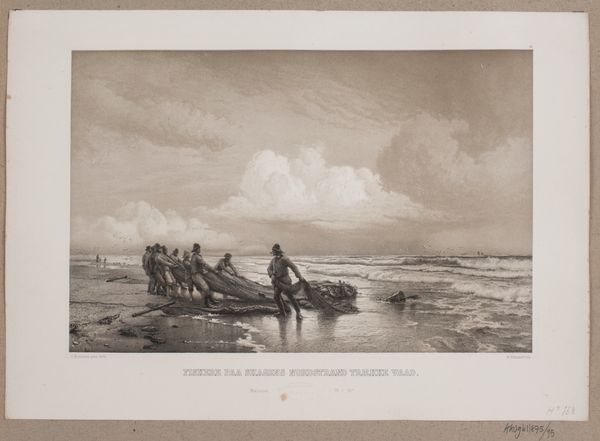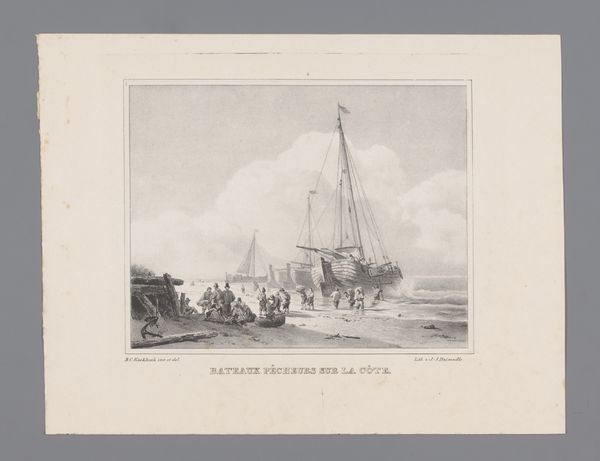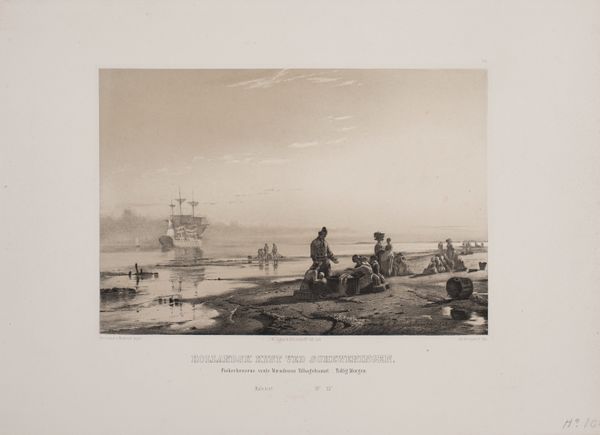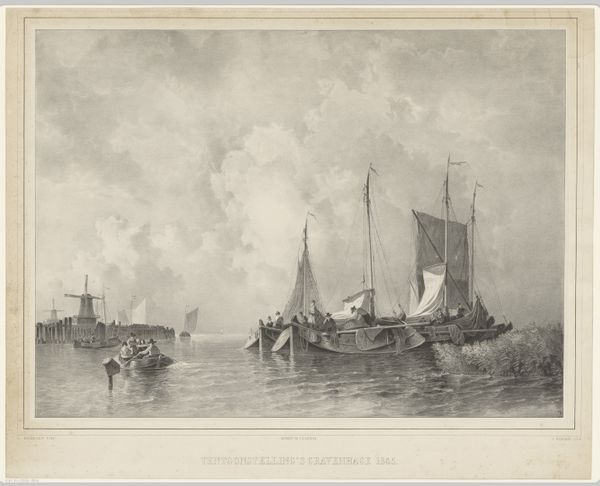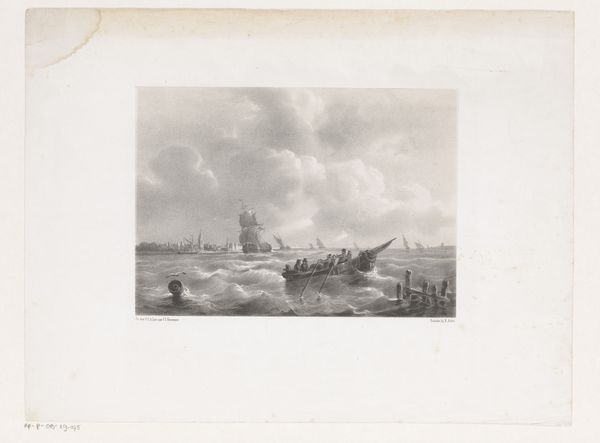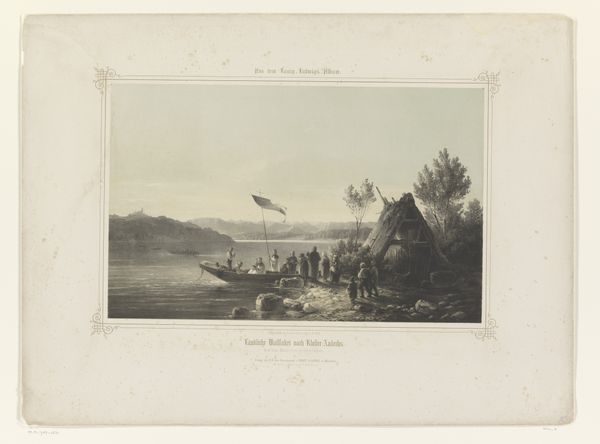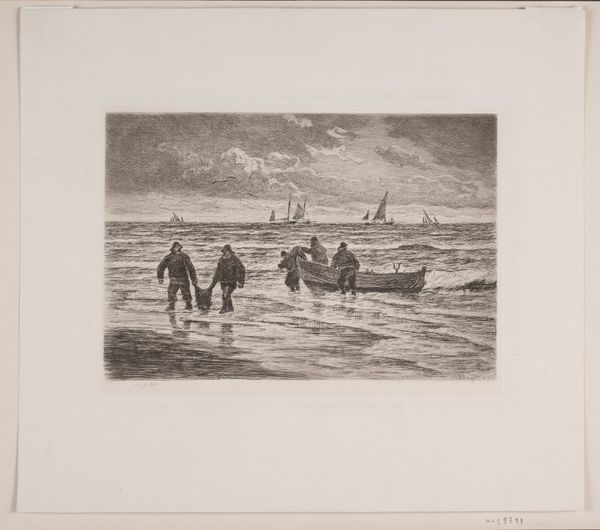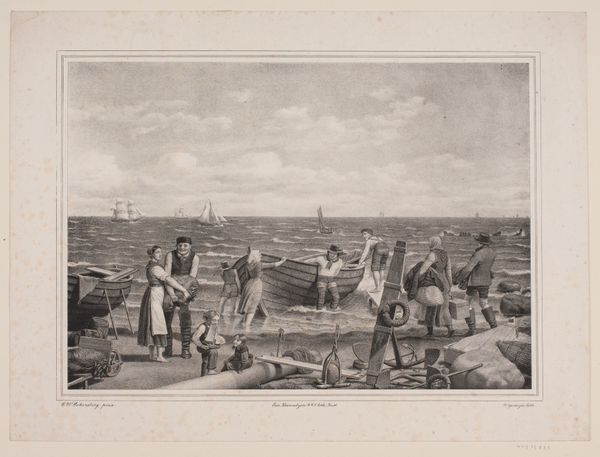
graphic-art, print, etching
#
graphic-art
# print
#
etching
#
landscape
#
etching
#
genre-painting
#
realism
Dimensions: 157 mm (height) x 230 mm (width) (billedmaal)
Curator: This etching is titled "Glibfiskere i Limfjorden," placing us in the Limfjord, a body of water in Denmark, sometime between 1870 and 1881. It is a work by Hans Smidth, currently residing at the SMK, Statens Museum for Kunst. Editor: There’s a certain starkness to it. It's incredibly detailed for an etching, but the lack of color lends a feeling of isolation to these figures wading through the water. A somber sort of toil, wouldn't you say? Curator: Definitely. The choice of etching, as a medium, is important here. Look at the lines, the precise control Smidth had to exert. This wasn’t a quick sketch; this was deliberate, painstaking work. The act of etching itself mirrors the labor being depicted—repetitive, demanding. Editor: And look at the iconography. Those hats! The man in the top hat, especially. He disrupts the presumed homogeneity of the laboring class; what does his presence signify about social mobility, or perhaps disguised exploitation? It feels charged with meaning. Curator: Perhaps it suggests an interesting interplay between local labor practices and wider economic shifts. This "gleaning," as the title hints, could be tied to specific communal regulations, an allowed practice even for the poor. Editor: You’re suggesting it might carry the weight of established traditions? While these fishermen clearly grapple directly with the materiality of their work, the image suggests the weight of symbols, the hats a marker for shifting or contested social positions. There's tension brewing just beneath the surface. Curator: Precisely. Etching also offered avenues for broader circulation; prints such as this allowed such images of labor to reach larger audiences. So it depicts work, but it’s also *working*, isn’t it? Editor: A subtle class critique rendered in monochromatic tones, if you will. These are figures defined by work and circumstance—rendered visible through the careful deployment of line and shadow. Quite powerful, indeed. Curator: Exactly! Smidth invites us to see beyond the immediate image, to consider the layered processes of production and meaning-making, both within the frame and beyond. Editor: It really showcases how a single image can become such a compelling carrier for multifaceted stories, both explicit and tacit, simply through the arrangement of culturally charged symbols.
Comments
No comments
Be the first to comment and join the conversation on the ultimate creative platform.


